
St Mary in the Baum
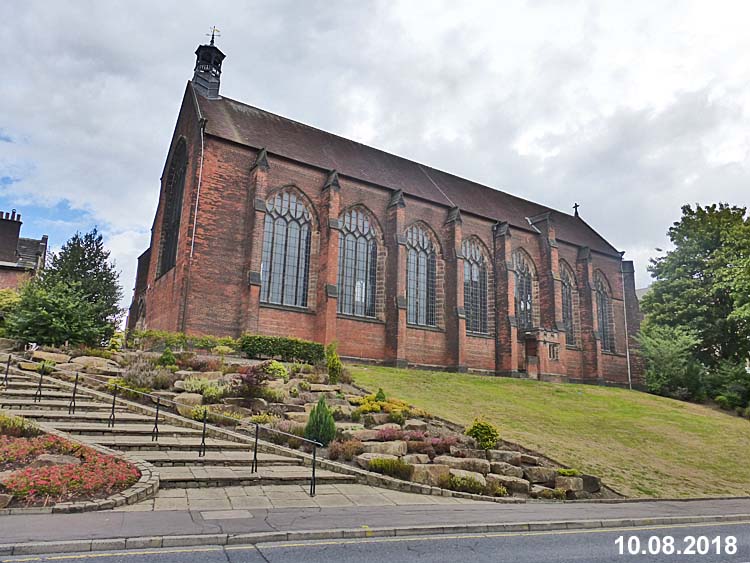 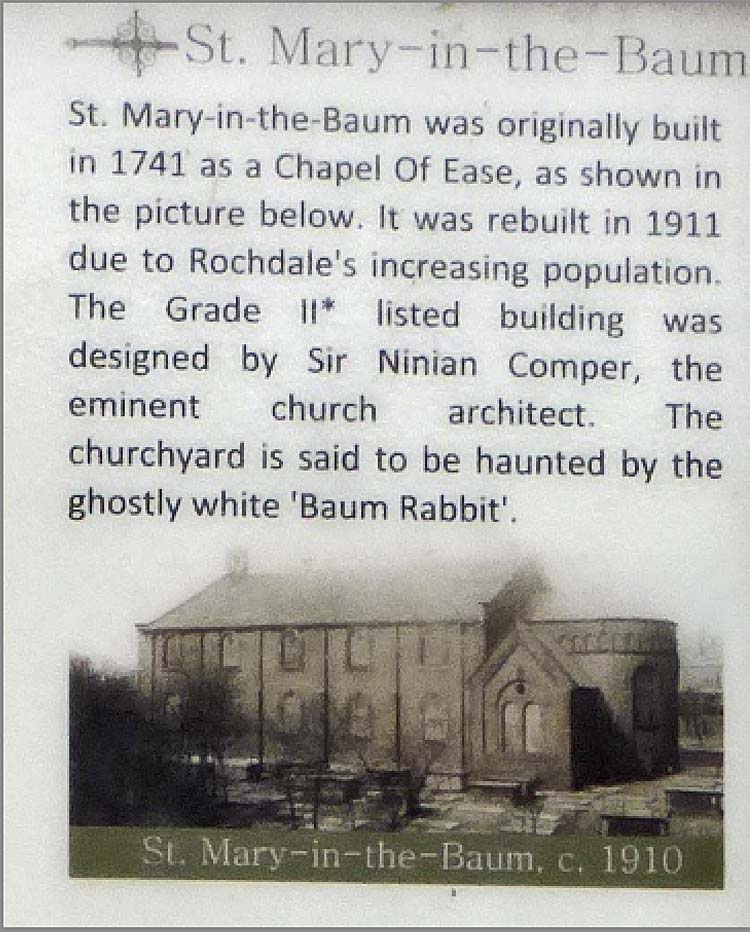 Historic England say on their
website that, "... The Church of St
Mary's-in'the-Baum, Rochdale, originated in 1738
when a subscription deed outlined the need for a
'chapel of relief' in Rochdale due to the growing
number of parishioners. The resulting chapel and
associated churchyard was largely gifted by Samuel
Chetham of Castleton Hall, who supplied the land
and £500. The chapel opened for worship in 1742.
It was a modest, brick-built, rectangular building
of six bays with round-headed windows. In 1865 a
chancel was added and the following year it became
a parish church. In 1867 the windows were filled
with paired stained glass roundels of Christ's
Life by Wailes to designs by the Revd Robert
Napier Sharpe.
By 1905 the church was suffering
from cracks and a sinking apse.
The decision was made to build a new church, though the C18 building was well-loved by the parishioners and there was a clear desire to retain some of its character in the new design. A challenging design brief was drawn up including improved ventilation and light within the mill-ridden neighbourhood, greater interior decoration, greater capacity (682 persons was specified in one document), and also the retention of the character of the original chapel. The architect was Ninian Comper whose design for the new church sensitively addressed the brief. The church had an unusual floor plan. The south side of the built-up site provided the best light due to a fall in the land. A continuous nave and chancel were located here where they could be well lit by large, clear glass windows. It also enabled the large east window to be located in the only open space between the high cotton mills on its eastern side. A broad central aisle acted as the principal circulation space of the church, and beyond was a low, north aisle built in the character of the original chapel. Decorative treatment was concentrated upon the interior, with a simple exterior of handmade brick, a pragmatic choice by Comper as he considered it would resist the effects of pollution from the industrial location better than the local sandstone. " 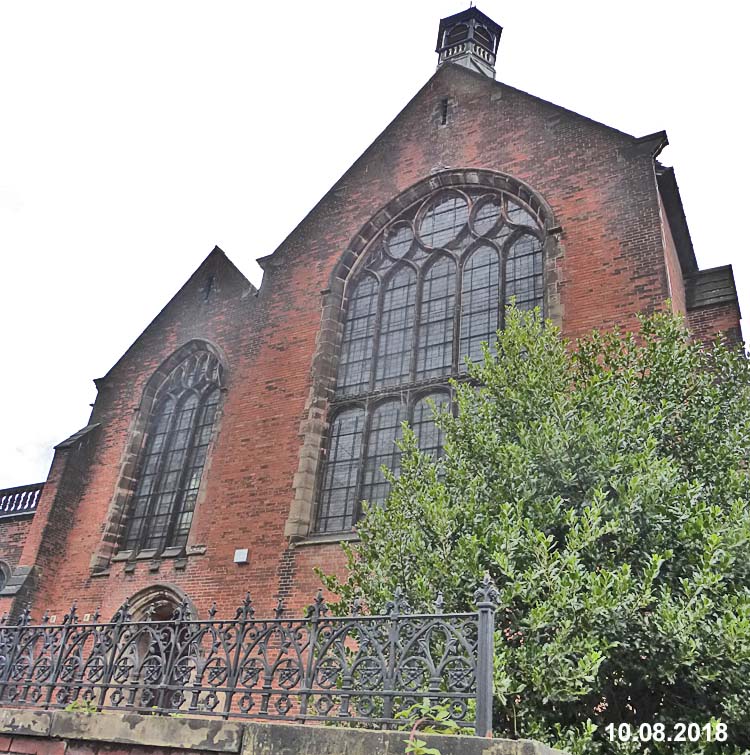 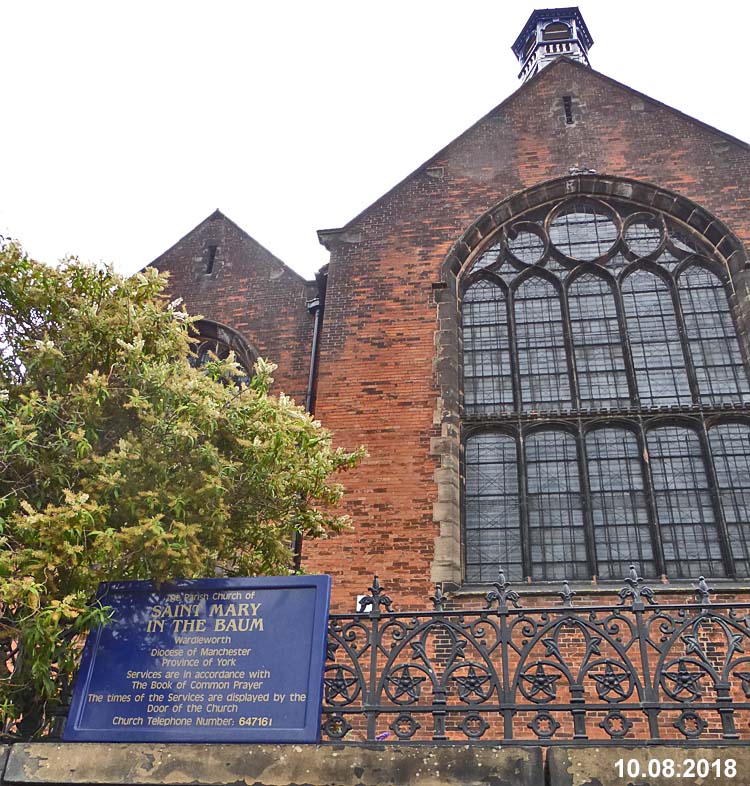 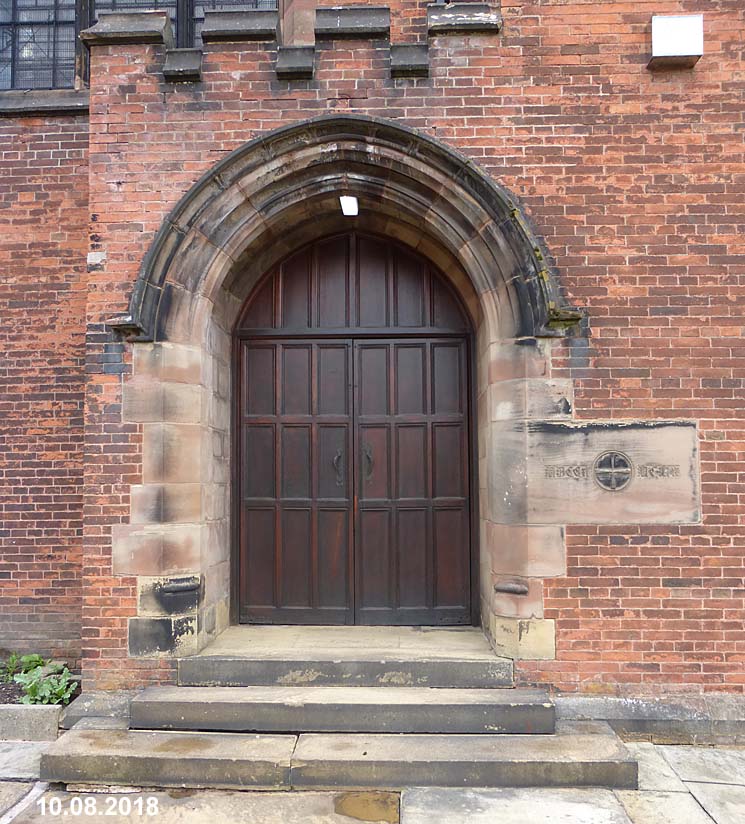 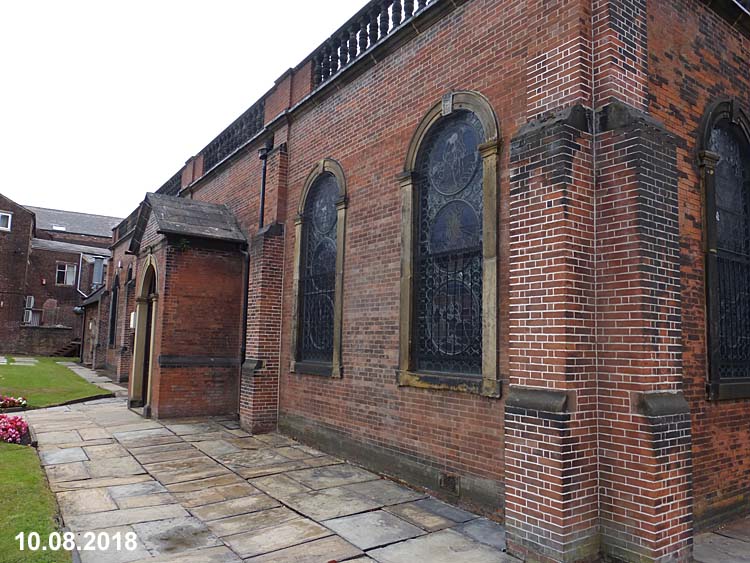 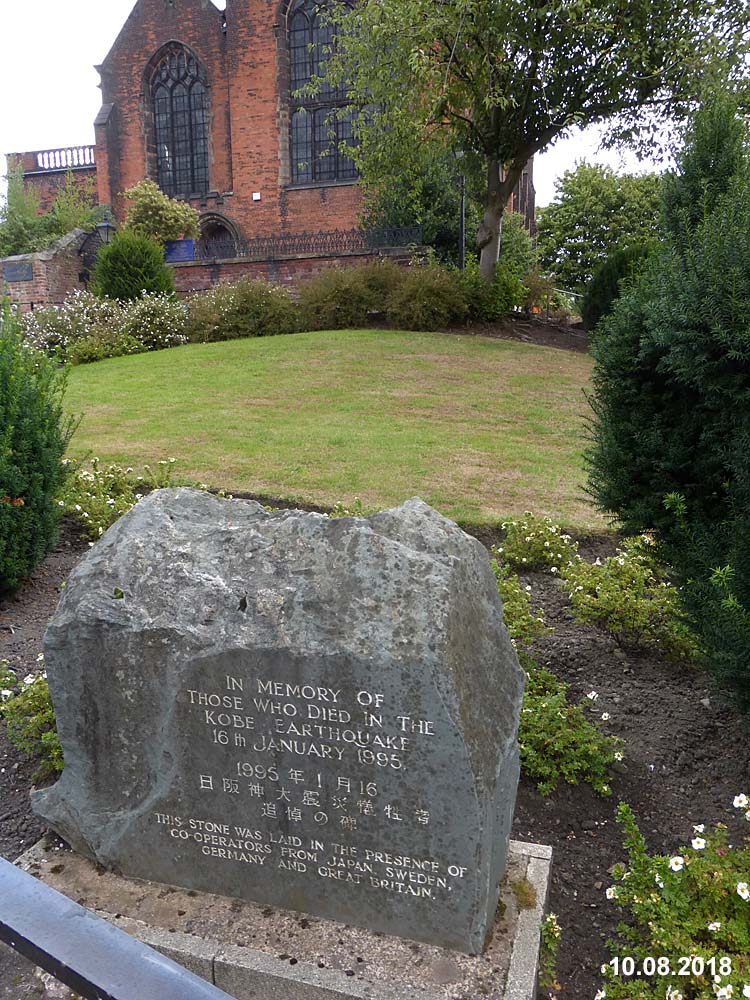  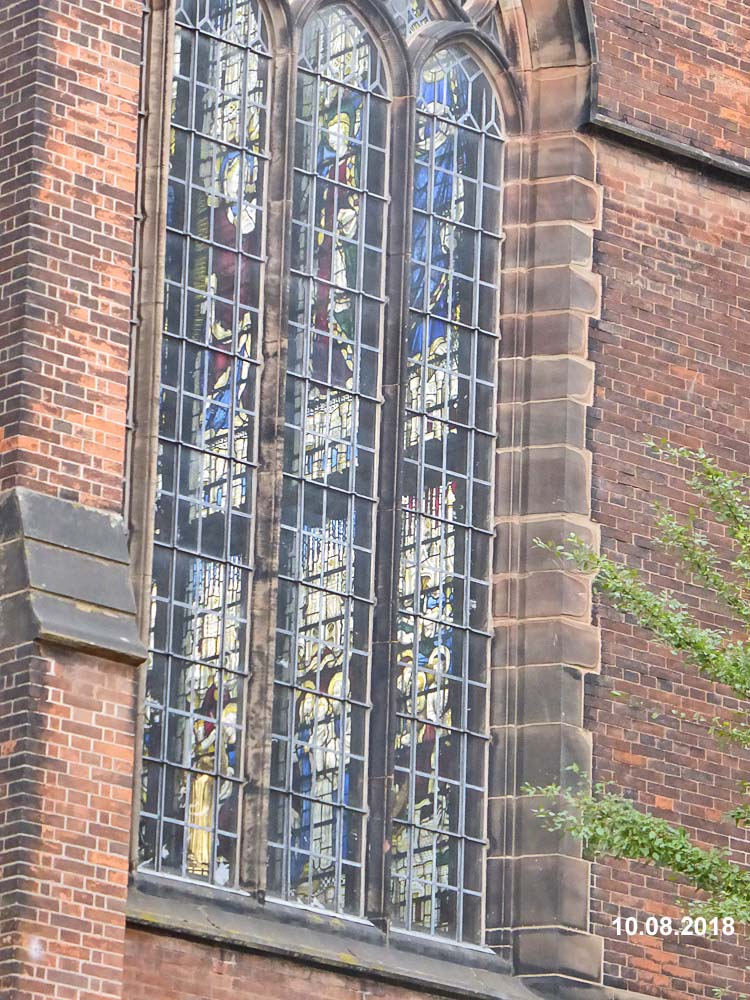
|
Close Window
